
15 Best Healthy Snacks for Weight Loss

Published:
Readtime: 14 min
Every product is carefully selected by our editors and experts. If you buy from a link, we may earn a commission. Learn more. For more information on how we test products, click here.
If you are anything like the team at Man of Many, working from home has meant one thing, endless snacking. When you find yourself trying to type away on a new proposal just feet away from the pantry, it can be hard to keep your attention focused and your waistline trim. In fact, while we aren’t permitted to travel at the moment, thanks to the COVID-19 lockdown restrictions, that hasn’t stopped us from making a record number of trips to the fridge and back. But quarantine doesn’t have to equal an isolation blowout according to Dr Michelle Celander, director of program and science at WW (formerly known as Weight Watchers).
“Whether you’re looking to manage your weight or simply develop healthy habits during lockdown, the key is to start by making small but smart swaps, rather than completely overhauling everything you enjoy eating. Restricting yourself will only leave you feeling deprived and is difficult to sustain,” she says. “While spending so much additional time at home, it is important to take the time to check in with hunger signals and ask yourself before you reach for food – are you truly hungry or are you turning to food for another reason like boredom or stress? It’s important to focus on recognising hunger and fullness signals and starting to identify when you’re eating is influenced by other things like unwanted emotions.”
We spoke with the qualified dietitian and doctorate-level research scientist to uncover the best healthy snacks to keep you from going overboard during isolation. But before we jump into low-calorie snacks and healthy food combos, Dr Celander says it’s important to get a grip on the basics; such as macronutrients.
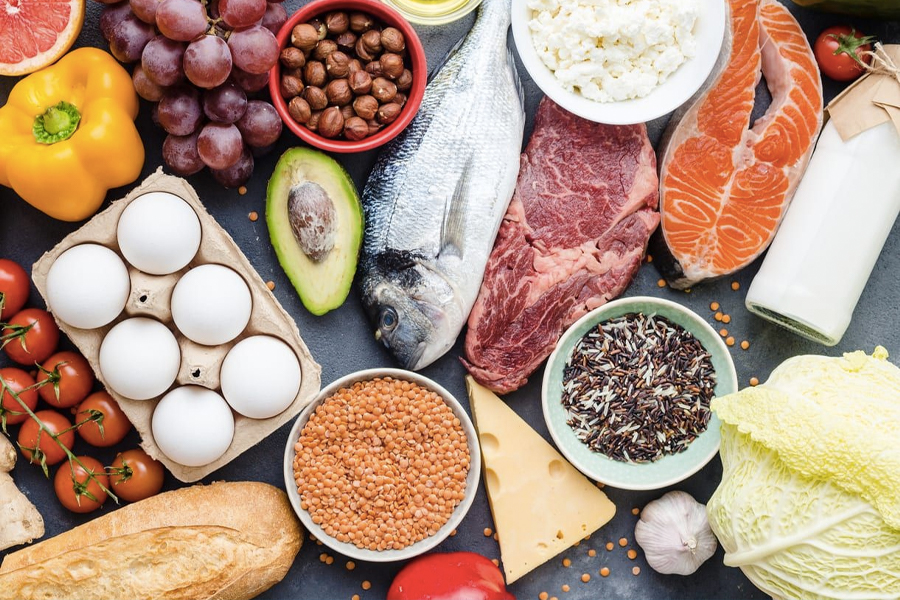
What are Macronutrients?
While you would have surely heard the term ‘macronutrient‘ before, defining it can be another thing altogether. Put simply, macronutrients is the name given to the main suppliers of nutrients in the body. In addition to providing your body with the energy it needs to function, macronutrients or ‘macros’ serve a wealth of other valuable purposes. Essentially, macronutrients are split into three categories;
- Carbohydrates
- Protein
- Fats
All three of these macronutrients provide energy, which is measurable in calories or kilojoules, keeping you up and active throughout the day. But not all macronutrients are created equally. Nutritionist and naturopath Reece Carter said that when it comes to healthy snacks, there are some foods that should be forefronted.
“Instead of highly processed snacks, focus on foods that are higher in protein, fibre, vitamins, and minerals. Protein and fibre are particularly important because they help keep us fuller for longer — and they ensure sustained energy,” Carter says. “Try keeping healthy snacks on hand like nuts, fruit, cut veggies, boiled eggs and yoghurt. This way, you can make sure you’re not only curbing that 3pm slump, but also providing your body with essential nutrients to really seize the day.”
Carbohydrates
In your diet, carbohydrates, better known as carbs are the most important and common suppliers of energy for your daily mental and physical activity. You may be under the impression that all carbs are bad, but that isn’t necessarily the case. In fact, some carbs are vitally important in brain function and performance, it just pays to know which ones. In a general sense, you can split this macronutrient into two sections;
- Simple carbs (Monosaccharides), as the name suggests are the most basic suppliers of energy to the body. These are generally high-sugar foods that are not great for you.
- Complex carbs (Polysaccharides) are a great source of longer-lasting energy that allows your body to function. Often this includes starch-based foods such as sweet potato, grains and legumes.
Despite what you may have heard, carbos aren’t the devil. In fact, Carter suggests that a balanced diet is far more conducive to a happy and healthy snack routine.
“I never advise cutting out entire food groups, but it’s likely that if you’re exercising less during lockdown, you might need a little less fuel,” the nutritionist and diet expert says. “Make small changes to portion size if you’re less active than usual, but don’t eliminate entire food groups like carbohydrates. You still need plenty of carbs, protein, good fats, and fibre from whole food sources for general health and wellbeing.”
Protein
We’ve all heard of protein, but it turns out the science behind it is a little more complex than just chicken breast. Specifically, proteins are made up of linked chains of amino acids; the human body contains a total of 20 different amino acids. These amino acids are categorised into three segments; essential, semi-essential and non-essential. The human body isn’t capable of producing sufficient essential amino acids, so eating a high protein, high fat diet is imperative for your health. You could also opt for protein supplements, however, protein ingested from food sources will always serve you better.
“Before stockpiling expensive supplements or highly processed protein powders and snacks, take a look at your diet. Good quality whole foods like eggs are packed with natural proteins and vitamins,” Carter says. “They are an affordable and accessible kitchen staple and are ideal for muscle development, recovery and sustained energy. Plus, they cost less than $1 a serve. Also consider adding other foods such as lean meats, poultry, dairy and seafood to increase your protein intake with a food-first approach.”
Fat
Fat is the lifeblood of our bodies. Lipids (fats) come in either solid form (butter, coconut fat) or liquid form (plant and vegetable oils). While we’ve been trained our whole lives to avoid fat like the plague, fat is actually a critical component of your diet and should not be ignored under any circumstances. The trick is to steer clear of trans-fat, which you’ll find in baked goods, fried foods and margarine.
Healthy Snacks for Weight Loss
Now you’ve got an idea about what you’re putting into your body, you are better equipped to make the right decisions. Finding the perfect balance of macronutrients will be the best way for you to make sense of the snacking aisle. “While being in lockdown doesn’t mean you’ll automatically become deficient in specific nutrients, there are foods you can eat which can help tackle some of the challenges you might be facing in isolation,” Dr Celander says.
“Look for healthier alternatives to your favourite foods that are still just as satisfying. Even take the chance to get creative in the kitchen. For example, homemade burgers and pizza can be just as delicious when made with lean meat and low-fat cheese. Or try bulking out pasta bolognese or shepherd’s pie with extra grated veggies like zucchini and carrot and opt for low-fat dairy over full-fat to help lower the amount of saturated fat and total energy you’re having each day.”
Here is a list of the best healthy snacks for weight loss.
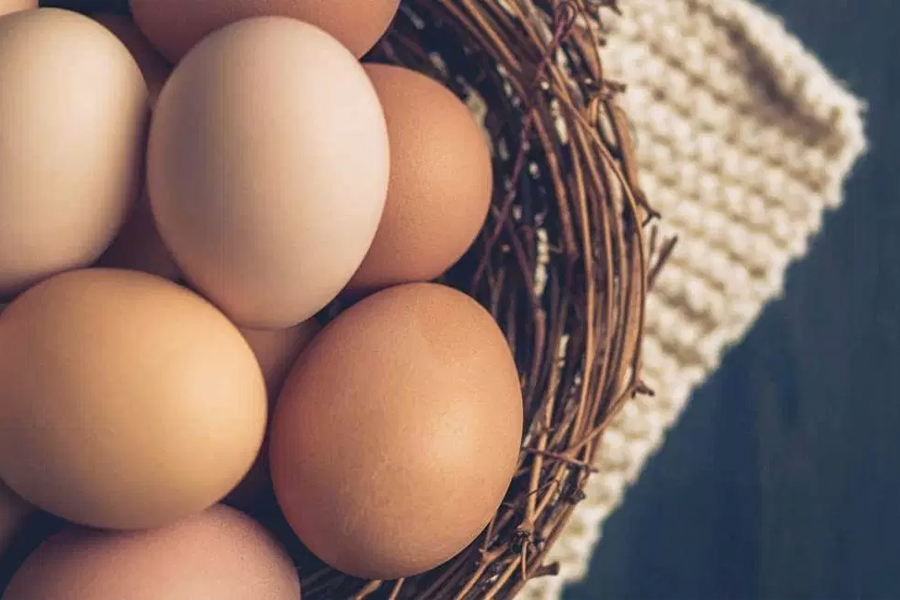
1. Eggs
“With recommendations to stay at home as much as possible, you may be missing out on your regular dose of sunshine which remains the best way of upping your Vitamin D levels,” Dr Celander says. Few foods contain vitamin D, however eggs, as well as oily fish like sardines, mackerel and salmon, are some of the best dietary sources – they’re also a ZeroPoint food on WW, which means they don’t have to be measured or tracked when you follow the program, making them a great go-to foods.”
Additionally, eggs are rich in a wide and complex variety of vitamins and minerals that serve multiple purposes in the body.
“Eggs are high in vitamin D, which is important for bone health and immunity; and they contain loads of protein too, for muscle recovery,” Carter says. “Make sure you’re eating the whole egg rather than just the egg whites because the whole egg contains more vitamins, minerals and protein than the whites on their own. Overall, whole eggs are better for you.”
Carbohydrate: Low
Protein: High
Fat: High
Contains: Vitamin D, Vitamin A
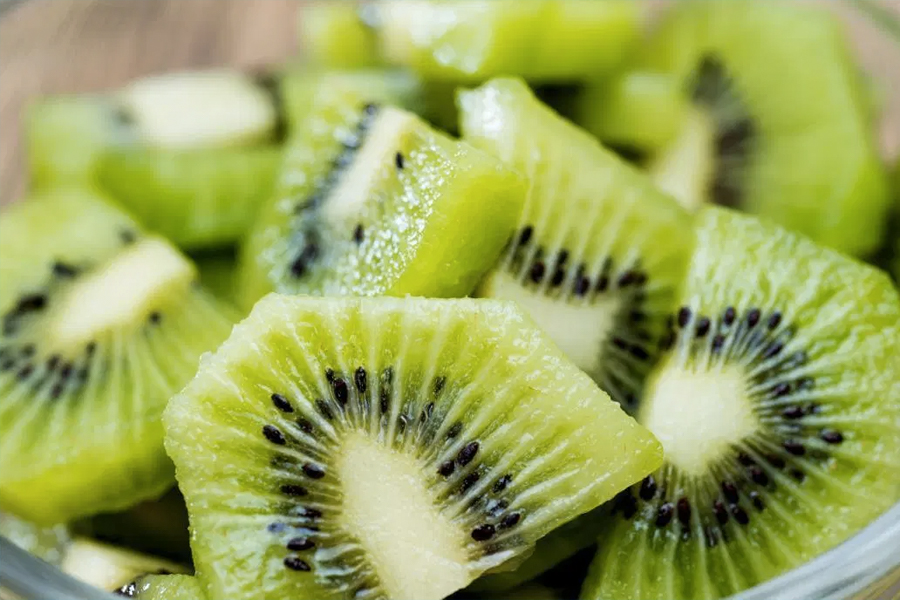
2. Kiwi Fruit
With everyone trying to up to their current health capabilities, there has been a big push for immune-boosting foods. “Along with citrus fruits including oranges, tangelos, lemons, limes, mandarins and grapefruit – all ripe and ready in the colder months – look for kiwifruit, which has twice the vitamin C content of an orange. With powerful antioxidants called lutein and zeaxanthin, kiwifruit has been studied for its potential role in boosting immunity, as well as protecting against macular degeneration – a leading form of blindness,” Dr Celander says.
Carbohydrate: High
Protein: Low
Fat: Low
Contains: Vitamin C
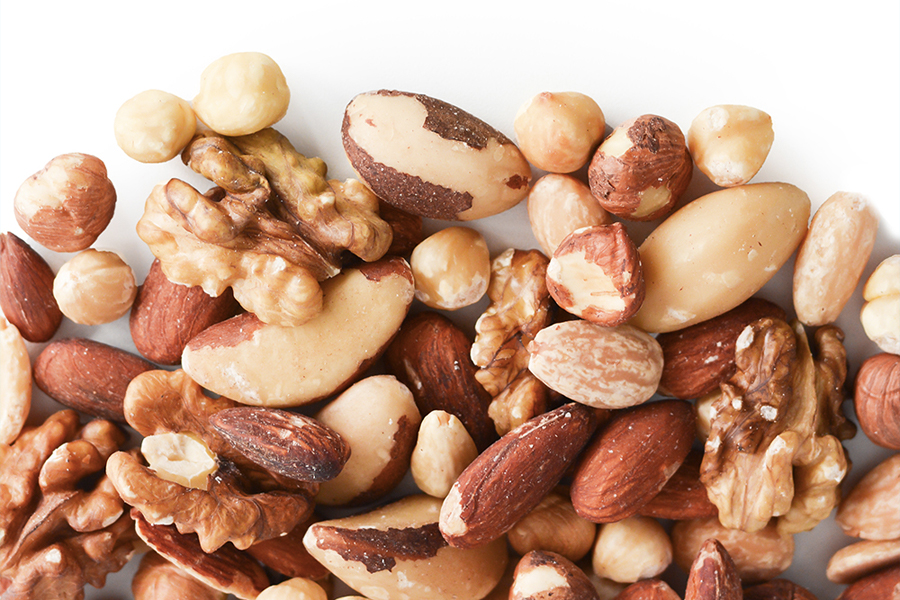
3. Mixed Nuts
Linked to a reduced rate of heart disease, nuts are an incredibly valuable source of natural fats. Nature’s treats, nuts are also highly filling, meaning that a quick hit won’t leave you hungry again in a matter of minutes. But be warned, the high level of fat makes this healthy snack high in calories.
Carbohydrate: Moderate
Protein: Moderate
Fat: High
Contains: Magnesium, Vitamin B-6
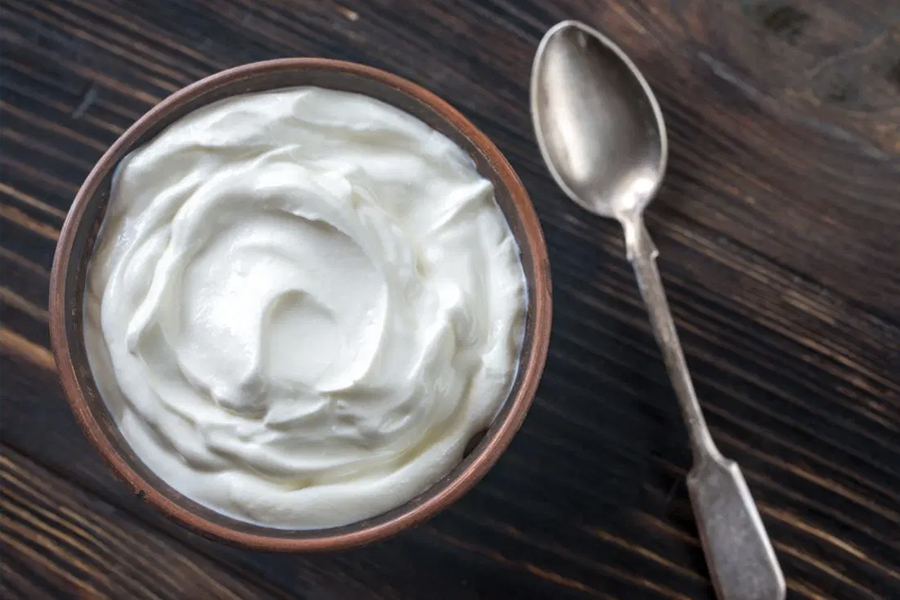
4. Greek Yoghurt
Greek, unsweetened yoghurt makes for a delicious healthy snack when you are craving something creamy. In addition to being a great source of calcium and potassium, Greek yogurt is also high in protein, helping you to stay fuller for longer.
Carbohydrate: Low
Protein: High
Fat: Moderate
Contains: Calcium, Potassium, Protein, Zinc, Vitamin B6, Vitamin B12
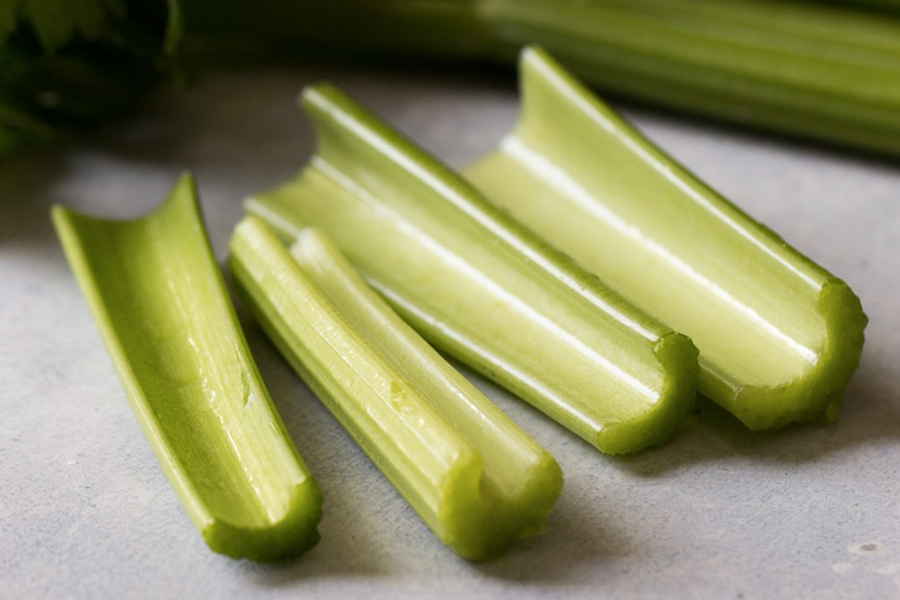
5. Celery Sticks
A classic low-carb snack, celery sticks are essentially just water with a few added benefits. These ones have almost no calories at all, so while celery sticks won’t necessarily fill you with energy, they will keep your hunger at bay.
Carbohydrate: Low
Protein: Low
Fat: Low
Contains: Potassium
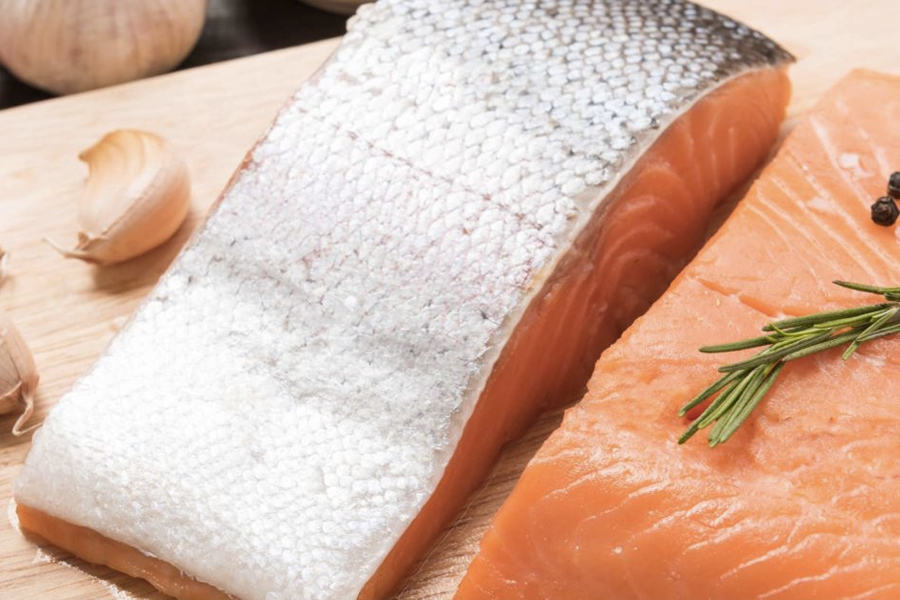
6. Salmon
“In times of uncertainty and feeling cooped up at home, you may find your mood slipping,” Dr Celander says. “While there’s no one food that will boost your mood on its own, there are many that may help when eaten as part of a balanced diet. For example, eating tryptophan-rich foods, such as fish, chicken, turkey, eggs, beans, oats and cheese, helps create serotonin—which is involved in regulating mood and sleep. Foods containing omega-3 fatty acids, such as oily varieties of fish, like salmon may also help decrease the risk of low mood.”
Carbohydrate: Low
Protein: High
Fat: High
Contains: Tryptophan, Cobalamin
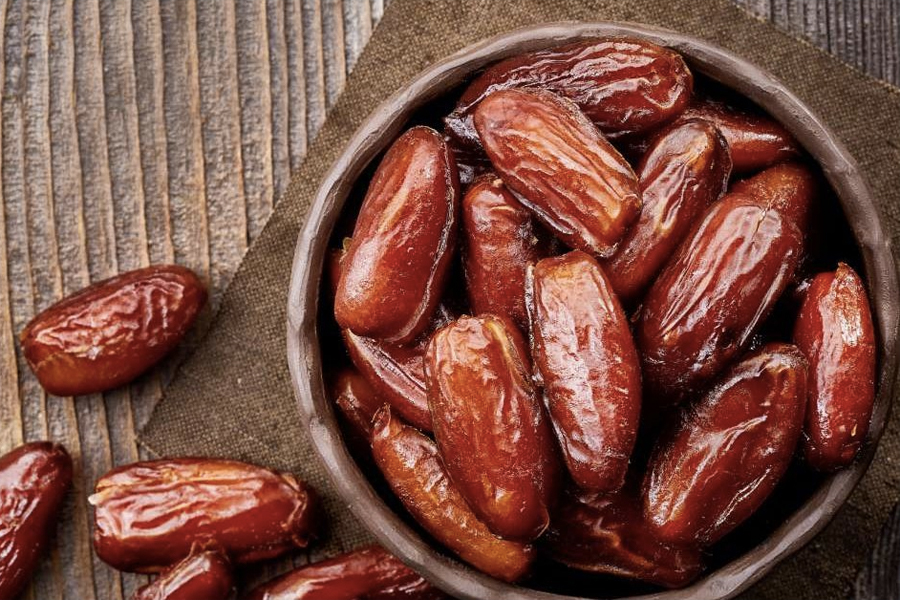
7. Dates
If you’re looking for a bit of a sweet fix, dates are the perfect way to break the cycle. The dried fruit is rich in natural sugars, making it a healthy snack that will not only satisfy your cravings but keep your energy levels high.
Carbohydrate: High
Protein: Low
Fat: Low
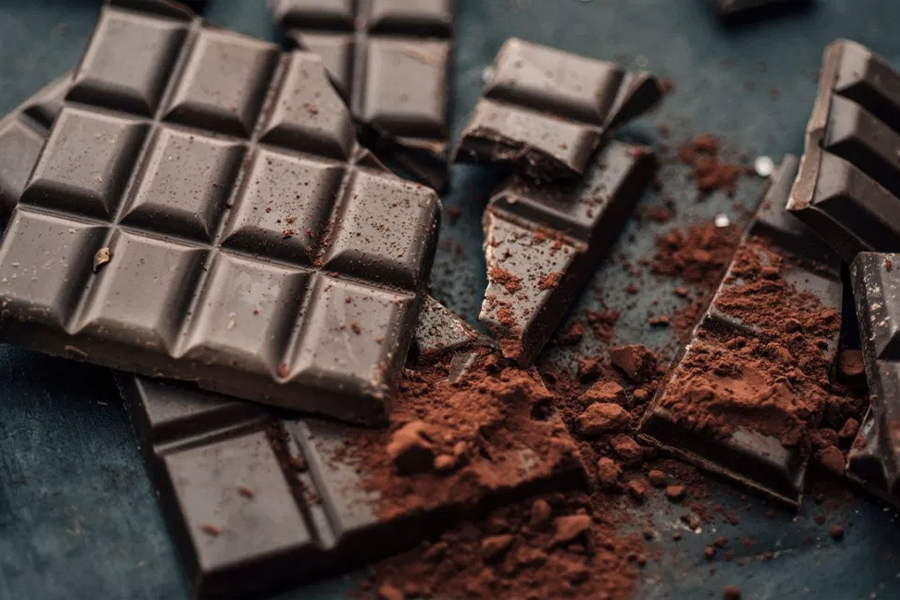
8. Dark Chocolate
Loaded with flavanols that may lower blood pressure and reduce the risk of heart disease, dark chocolate is a delicious weight loss snack. Make sure you go for an option that contains at least 70 per cent coca solids though, everything else is usually just filled with sugar.
Carbohydrate: Moderate
Protein: Moderate
Fat: Low
Contains: Magnesium, Potassium, Zinc
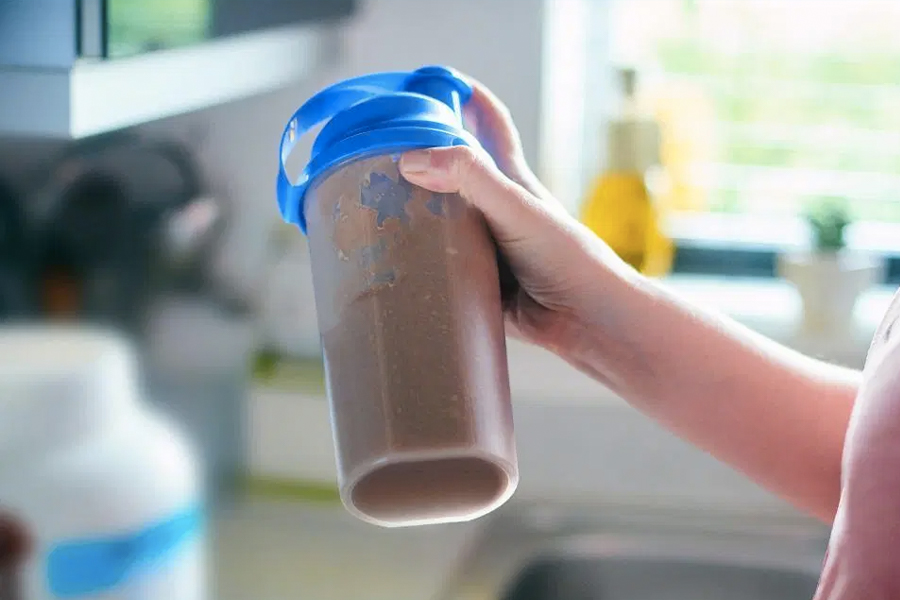
9. Whey Protein Shake
It doesn’t take a genius to figure out whey protein shakes will include a fair amount of protein, making them one of the best muscle-fibre building healthy foods on this list. A high-quality whey protein will regularly feature very little fat and few carbohydrates meaning that this healthy snack also registers as a low-calorie food.
Carbohydrate: Low
Protein: High
Fat: Low
Contains: Milk proteins
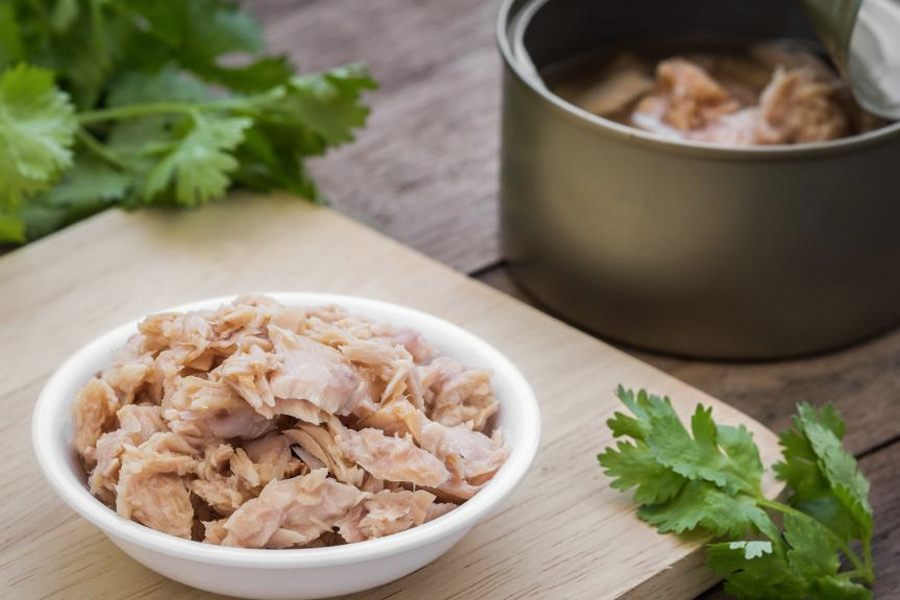
10. Canned Tuna
Rich in protein and natural fats, canned tuna is a healthy snack that can be eaten at any time of the day. Like other fatty fish, tuna has a solid amount of omega oils, which can aid in brain function and muscle development. Just be careful, flavoured tuna can hide a wealth of sugars and fats, so be sure to check the macros on the can.
Carbohydrate: Low
Protein: High
Fat: Moderate
Contains: Tryptophan, Cobalamin
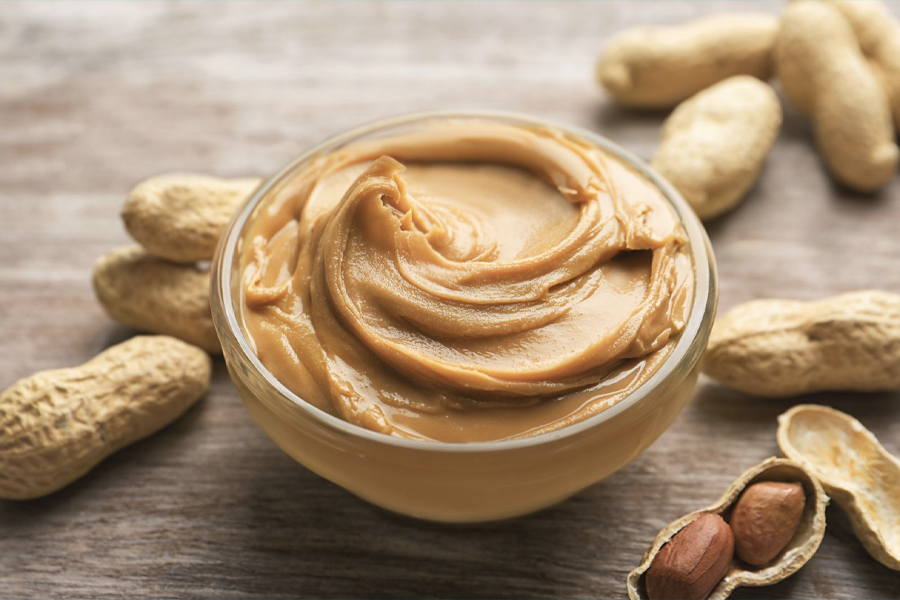
11. Peanut Butter
A quality peanut butter should consist of three ingredients; peanuts, salt and butter. If you have managed to pick up just that, then you have got yourself one healthy snack for weight loss. The low-carb snack is high in calories though, thanks to its significant fat content.
Carbohydrate: Low
Protein: High
Fat: High
Contains: Magnesium, Iron
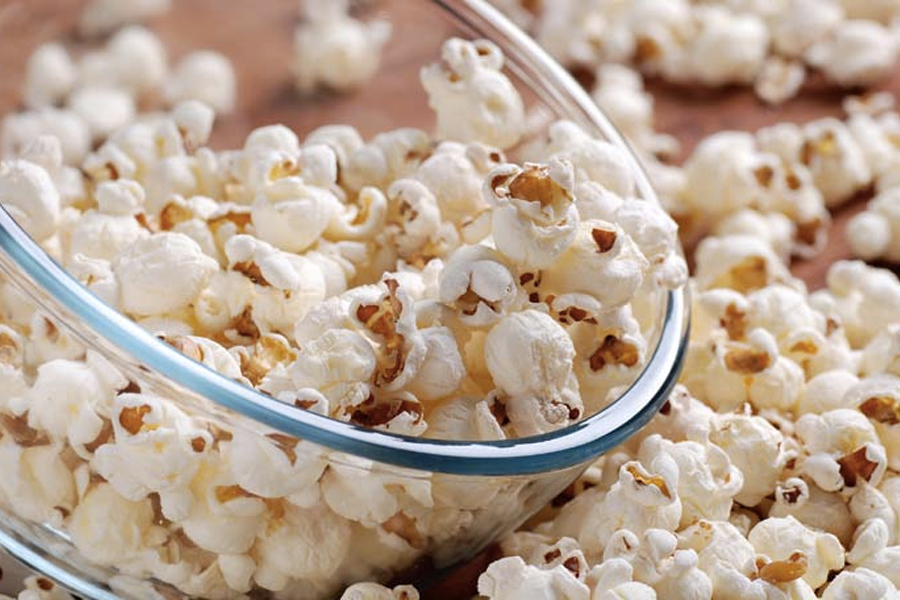
12. Air Popped Popcorn
Dr Celander says that air popped popcorn is one healthy snack that you can eat a lot of, thanks to its low-carb, low-calorie content. “It’s a great smart swap for chips and gives you something to crunch throughout the day,” she says.
Carbohydrate: Moderate
Protein: Moderate
Fat: Moderate
Contains: Calcium, Potassium, Vitamin A, Vitamin K
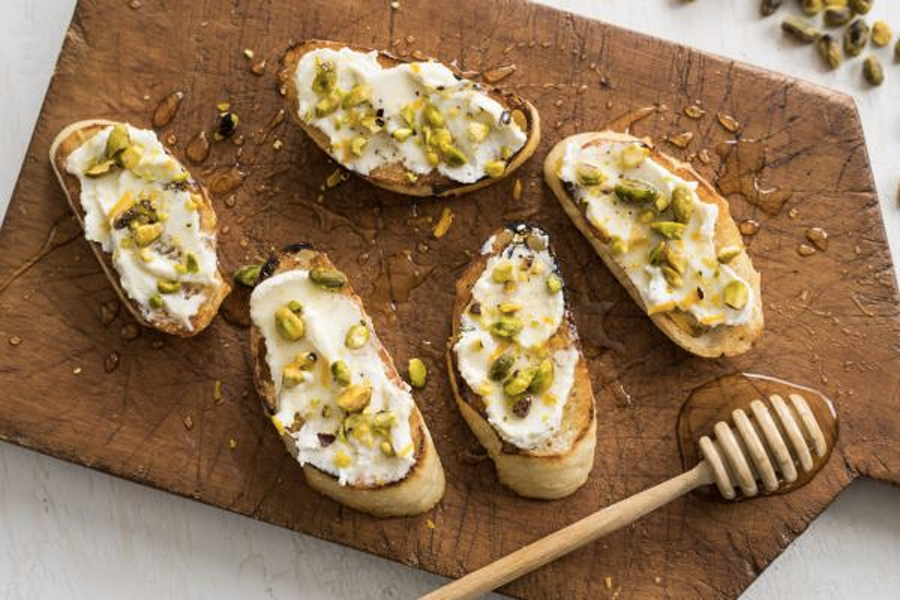
13. Wholemeal Toast with Ricotta and Honey
“Nutritious carbohydrates are your best bet for when you need some quick energy,” Dr Celander says. “They will give you a boost and keep you going for longer than a high-sugar food will. If wholemeal toast isn’t your thing, try some wholemeal crackers or a small tub of low-fat yoghurt with fresh fruit.”
Carbohydrate: High
Protein: High
Fat: High
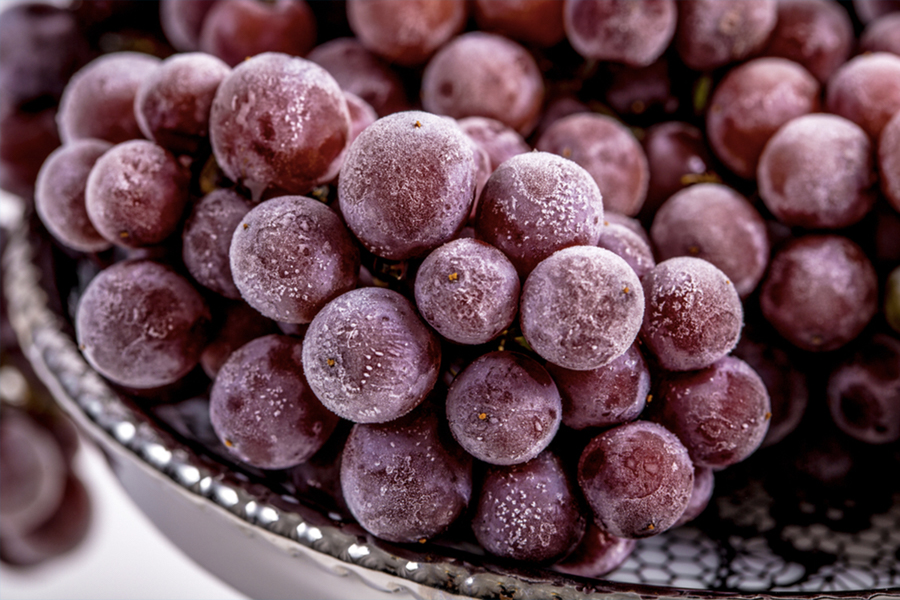
14. Frozen Grapes
Some of us prefer to savour our snacks, so rather than reaching for the sweets, Dr Celander suggests going to the freezer. “Frozen grapes or berries take longer to eat than, say, a chocolate which is gone in seconds. A piping hot cappuccino or steaming mug of tea can also do the trick,” she says.
Carbohydrate: Low
Protein: High
Fat: High
Contains: Tryptophan, Cobalamin
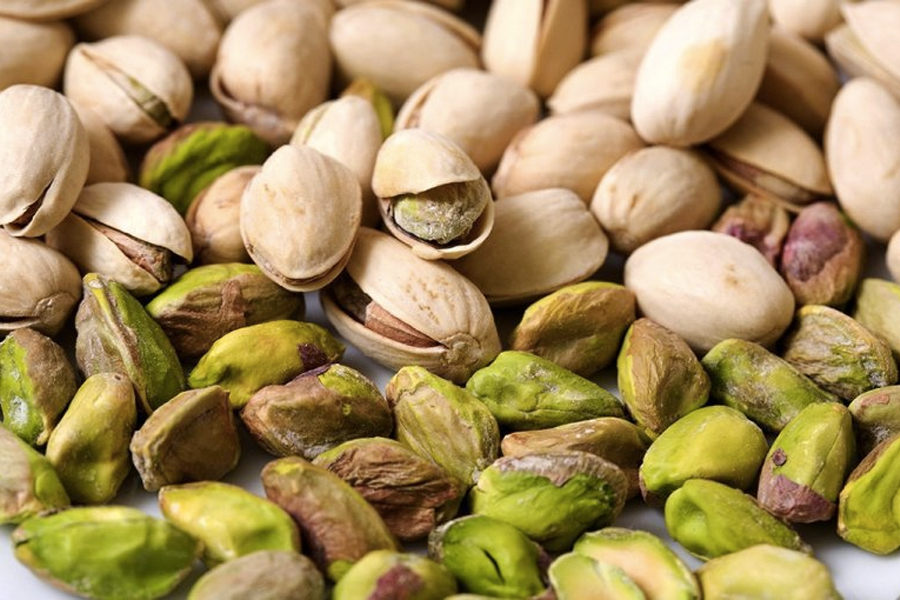
15. Pistachios in the Shell
“When emotional eating kicks in and you’ve tried a non-food activity like a walk but it hasn’t done the trick, opt for snacks that take some time to prepare like pistachios in the shell, fruit you have to peel (try a mandarin), or a sundae made with yoghurt, chopped fruit and a sprinkling of cereal and nuts.”
Carbohydrate: Moderate
Protein: High
Fat: High
Contains: Vitamin B6, Magnesium, Iron
Other Tips for Healthy Snacking
While getting a grip of your healthy snack ideas is one way to stay trim during this trying time, it isn’t the only way you can beat the battle of the bulge. Dr Celander says the first step in getting on top of your eating while working from home is realising that it isn’t a sprint. “It’s important to acknowledge that you’re going to snack during this time, and that’s okay. What you should focus on is how you do it.”
Here are Dr Celander’s tips for healthy snacking.
Set a Snacking Plan
Just because you’re at home, doesn’t mean you need to completely overhaul your routine. Think about what times of day you would typically eat when you’re in the office, for example, and aim to do the same at home. For example, if you usually have lunch at noon and a snack at 2pm, do the same at home. This will help you to return to your normal structure and limit the temptation to graze mindlessly throughout the day.
Take the Time to Snack-Prep
Planning ahead is the key to having something nutritious on hand when hunger strikes. When you do the grocery shop, spend some time first thing when you get home cutting fruit and veggies into snack-size pieces. If lunchtime is challenging because you’re time-poor, look to batch cook veggies and lean protein (hello slow cooker season!) on the weekends so all you have to do is reheat them each day for lunch.
Track Your Snack
Often we overeat because we forget what we’ve already had throughout the day. Keeping note of what you eat is a visual reminder of what you’ve consumed, which helps you stay accountable to the healthy food choices you make. You can track using a journal, notebook, taking pictures of your food or by using a purpose-built app like the WW app.
Still have questions? We’ve got you covered?
General FAQ
The best snacks for weight loss are celery sticks with peanut butter and eggs. This is because they each hit a healthy level of macronutrients.
It is better to eat large meals rather than constantly snack, however, if you can’t fight the hunger late at night, opt for a large glass of water and some nuts.
For the most part, canned tuna is extremely healthy. The fish has high levels of protein and omega 3 fatty acids, just watch out for the magnesium and salt levels.
You’ll also like:



















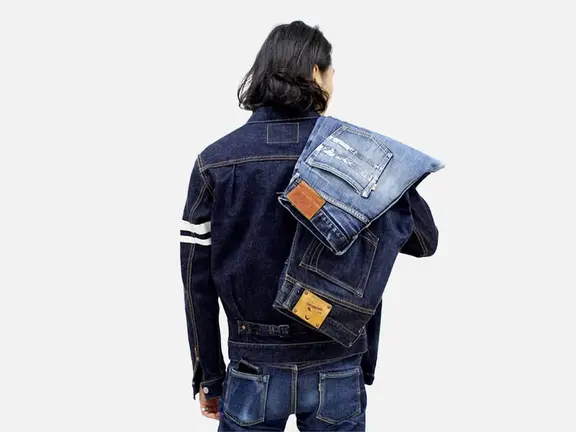
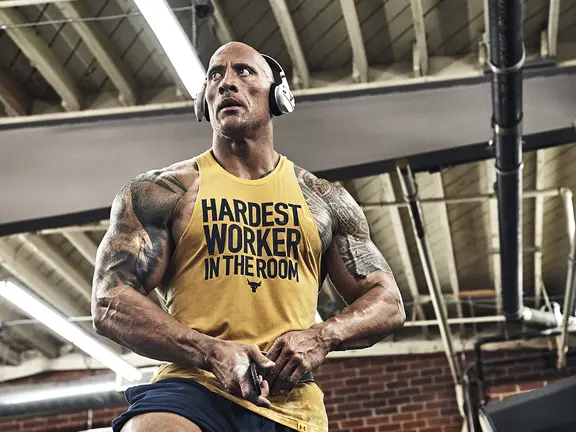









Comments
We love hearing from you. or to leave a comment.